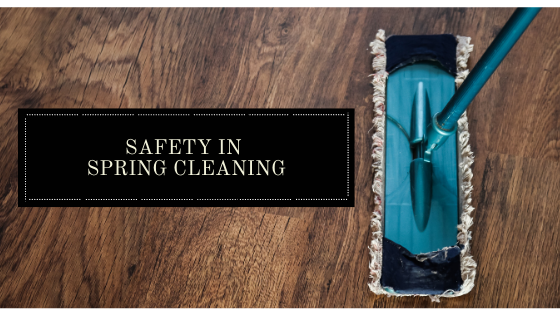
The annual spring cleaning exercise is something many families do, especially before festive seasons such as Chinese New Year. Don’t overlook it though, as spring cleaning can be a very physical and tiring task. A lot of time and work is involved, and there could even be a risk of pulling or straining muscles that you do not often use.
Spring cleaning also often requires people to bend down, reach into far corners, lift heavy items, move furniture or climb up and down ladders. Poor posture can hurt the back, causing you to suffer from sprains and aches or even injuries. Hence, maintaining proper form when conducting spring cleaning is extremely important for your overall health.
Do’s and Don’ts!
Take note of these do’s and don’ts for a safe time of cleaning up
Do!
- Take frequent breaks. Stretch your back, and limbs occasionally during cleaning and avoid being in a fixed position for too long
- Start spring cleaning duties early so you would not feel the need to rush to complete everything in a short time
- When lifting heavy items, squat down and keep your back straight as you look front and slowly stand up by straightening your knees. Keep the items as close to your body and distribute the weight on both feet
- Maintain an upright position when vacuuming. If you have to vacuum or sweep areas under a table or any low furniture, kneel down on the floor instead of bending your back
- Place the cleaning bucket on a table or chair to minimise the need to bend down repeatedly
Don’t!
- Do not attempt to lift anything with your knees locked and a curved back
- Do not twist your body when carrying heavy items. Use your feet to change direction by taking small steps
- Avoid filling a bucket of water to the brim as it will be too heavy to carry around
- Don’t carry a heavy bucket of water with one arm. Grasping the handle with both hands close to the centre of the body helps to distribute the weight of the bucket evenly on the body, so you don’t tilt your body to one side to balance, causing stress on the lower back, arms and shoulders
- Do not rely on your wrists alone when vacuuming. Instead, use gently swerving movements by shifting your body weight from side to side.
- Do not try to reach high places by standing on a chair. Use a stepladder and ensure that it is stable or there is someone to help steady the ladder at the bottom
- Avoid having to reach too high up above your head. Use an extendable pole to help clean high areas such as windows, shelves or the tops of cupboards
Help I’ve hurt myself!
In the event that you do injure yourself, stop what you are doing immediately, and carry out the RICE method to ease pain and help you recover:
- Rest – minimise the use of the injured area and do not exert pressure on it
- Ice – Apply an ice pack for 20 minutes on the injured area every 2 hours to help ease the pain and any swelling. Continue the process for the first 48 to 72 hours. Wrap the ice pack with a cloth prevent frostbite
- Compress – Wearing an elastic bandage will help to reduce any swelling. However, make sure that the bandage is not too tight as it will cut off blood circulation
- Elevate – Rest the injured area on pillows when you are sitting down, lying down or while applying ice, to minimize swelling
It is recommended to seek medical assistance from a doctor immediately if you are experiencing the following:
- If you are unable to feel or move the injured area
- If you are experiencing severe pain in the injured area
- If the injured part of your body is bent at an abnormal angle
- If there is no improvement in the injury despite applying the RICE method
- If you have re-injured an area that had been injured before
Visit your nearest Healthway Medical clinic today, for more information!









